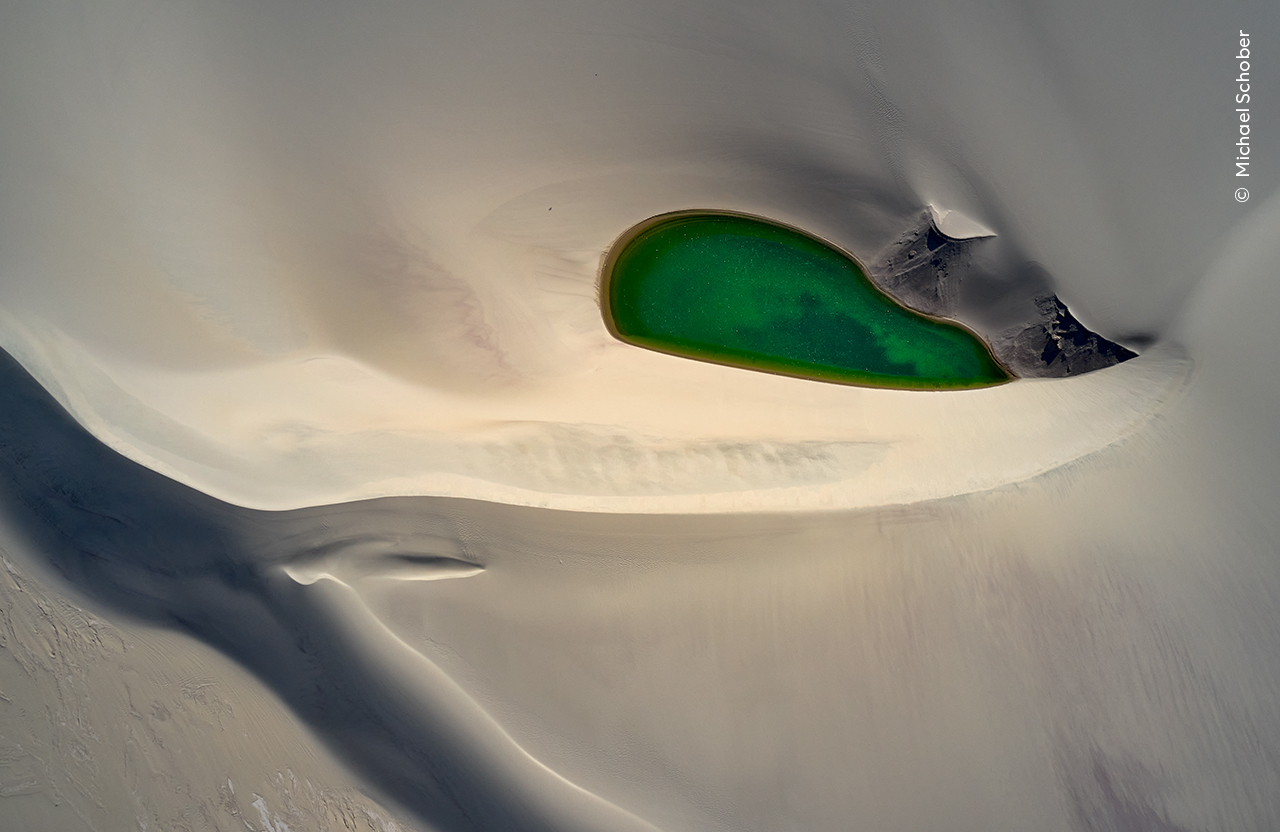Visit the exhibition
Discover the incredible stories of life on our planet through powerful photography and expert insight.
Tickets on sale now.

Michael Schober (Austria) reveals a precious waterhole inset like a green gem within the sand dunes of the Namib Desert.
The emerald pool was invisible to Michael, who was on the ground. ‘Only when the drone was up could I see the beauty of the desert,’ he says. ‘I discovered many such small waterholes, which allow animals to survive in this dry area.’
Many mammals, including gemsbok, springbok and zebra, as well as a unique population of elephants, take advantage of these precious waterholes.
In northern Namibia, along the remote and treacherous Skeleton Coast, the dunes of the Namib Desert stretch far inland. A diversity of animals and plants - many of them endemic to the region - live in the desert. During the day temperatures can soar as high as 60°C while at night they can plummet below freezing.
Discover the incredible stories of life on our planet through powerful photography and expert insight.
Tickets on sale now.

Austria
When he was 20 years old Michael completed an apprenticeship as a photographer and since then the medium of photography has never left him. He spends a lot of time in the Hohe Tauern National Park, which is right on his doorstep. His travels have taken him to Greenland, Iceland, Spitsbergen, the Falkland Islands and Africa. He’s a member of the German Society for Nature Photography and the Association for Animal and Nature Photography Austria.
Help us harness the power of photography to advance scientific knowledge, spread awareness of important issues and nurture a global love for nature.